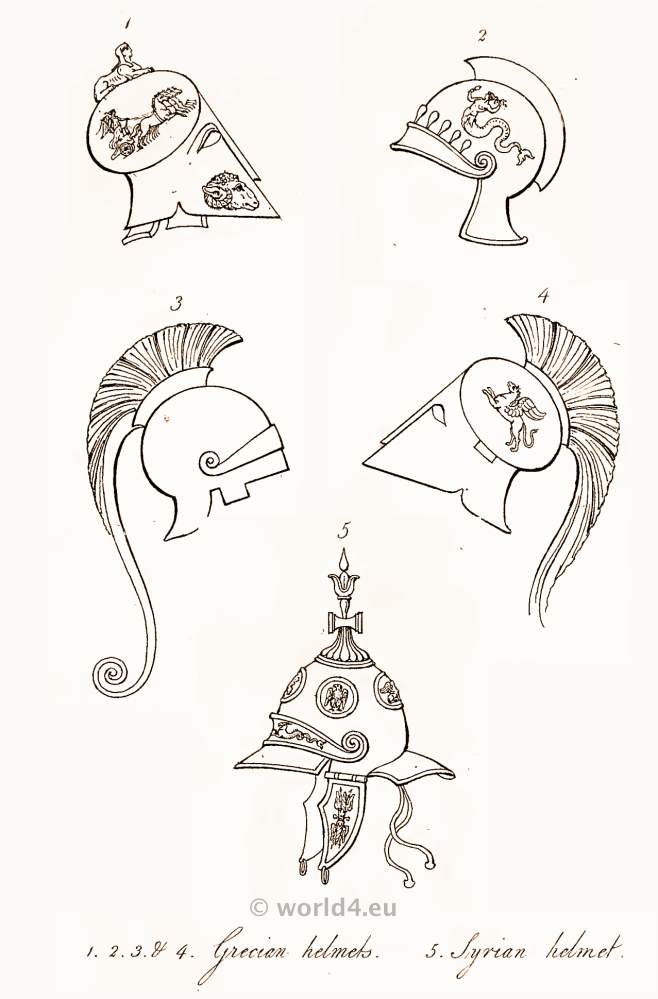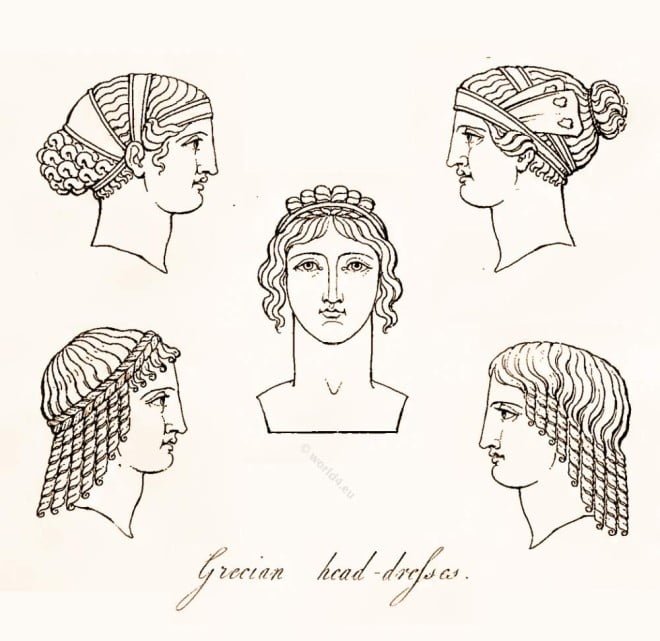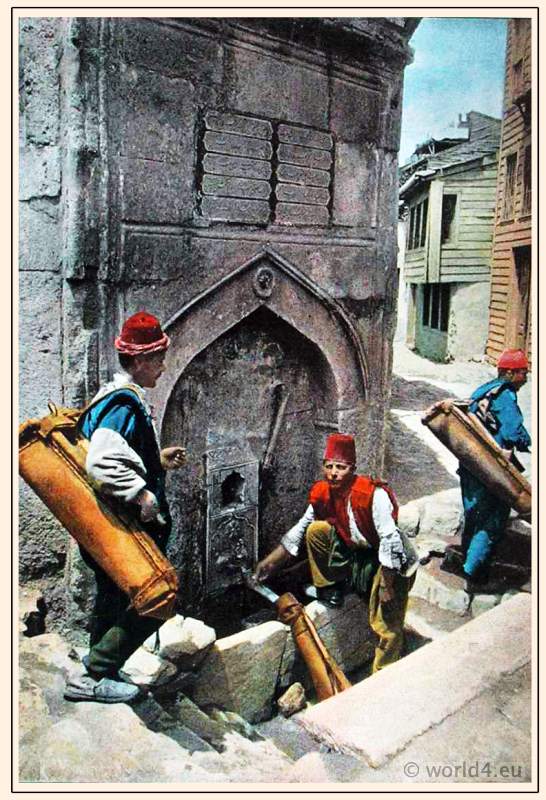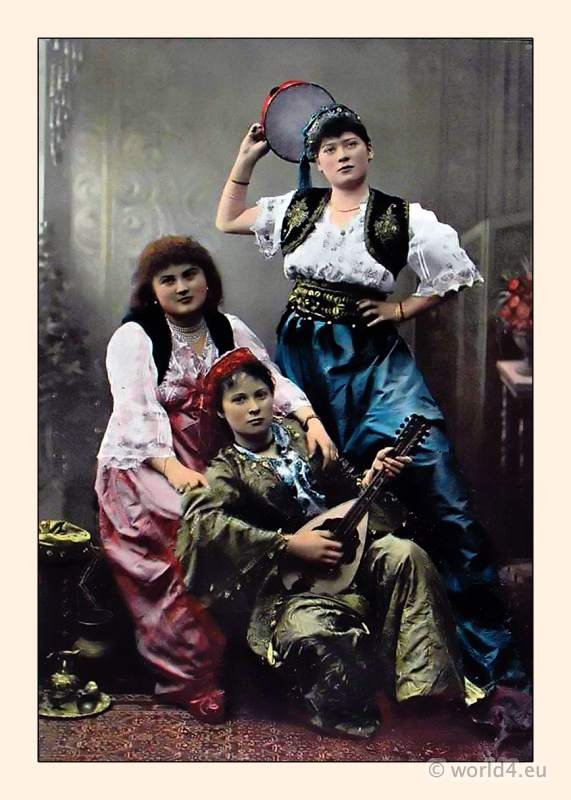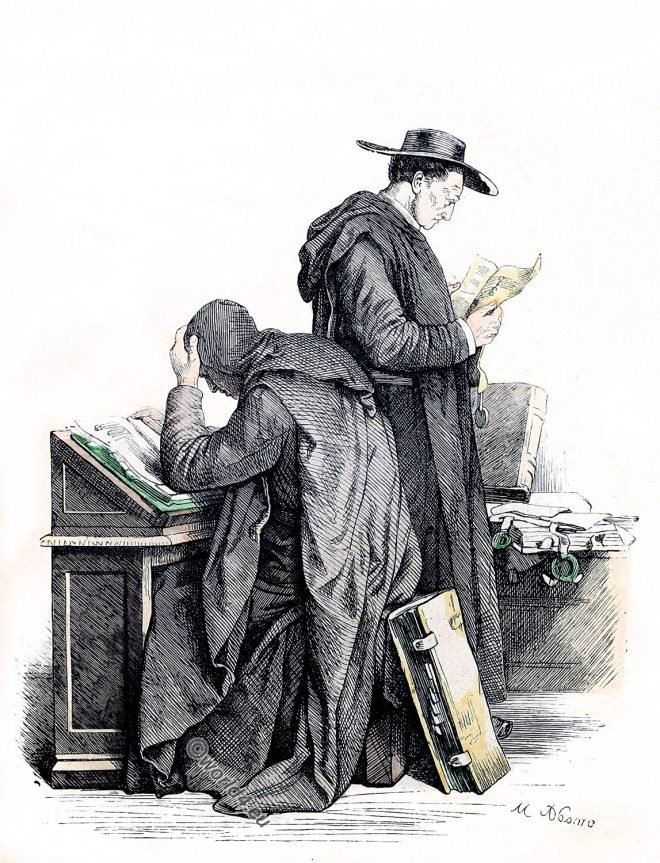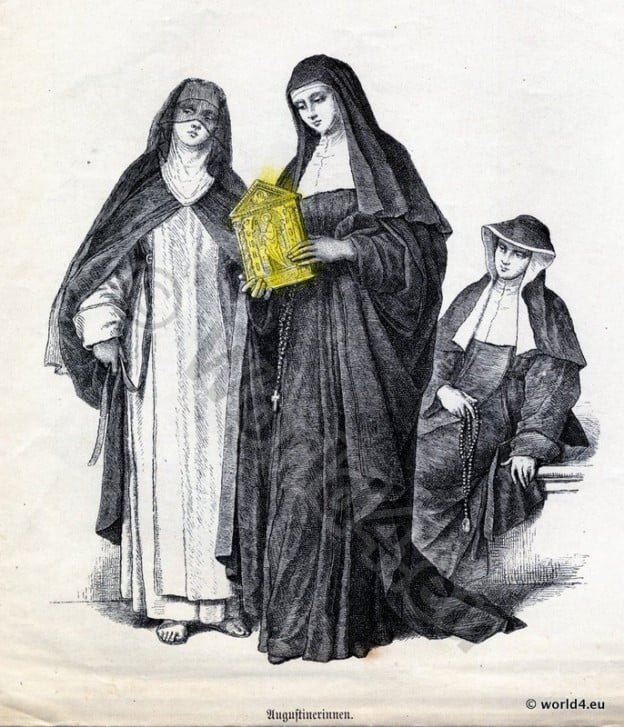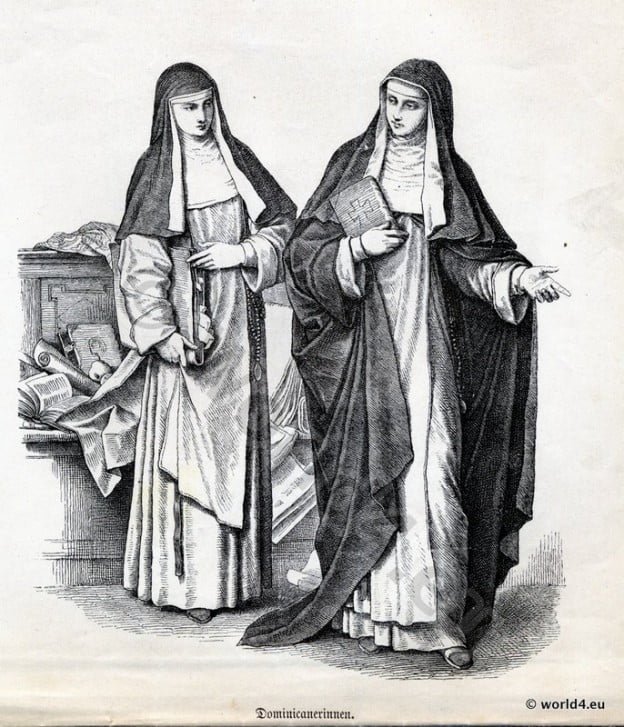Grecian female. The ancient Greek costume. Hellenistic period. Costume of the ancients by Thomas Hope.
Ancient Roman helmets of Minerva and Grecian Hero.
Different helmets of Minerva. Grecian hero helmets. Costume of the ancients by Thomas Hope.
Ancient Greek Helmets. Grecian and Syrian helmets.
Ancient Greece military. Grecian and Syrian helmets. Costume of the ancients by Thomas Hope.
Ancient Greek Headdresses and Hairstyles. Costume of the ancients.
Ancient Greek headdresses and hairstyles. Costume of the ancients by Thomas Hope.
Ottoman Costumes Istanbul. Water Carriers 1893.
Ottoman Costumes Istanbul. Water Carriers in Constantinople in 1893. Titel: Porteurs d’eau a Constantinople. Auteur du Monde Souvenirs de Voyages, Paris, 1893 Éditeur: L. Boulanger.
Ottoman harem girls costumes in 19th century.
Ottoman harem girls costumes in Constantinople 19th century. Ottoman women`s costumes in 1893. Original Titel: Dames du Harem a Constantinople. Auteur du Monde Souvenirs de Voyages, Paris, 1893 Éditeur: L.… Read More
Benedictine monks in 1870, 19th century.
Benedictine monks in 1870, 19th century.
Habit of Augustinian Nuns who live by the rule of St. Augustine of Hippo.
Augustinians is a collective name for various orders and congregations of nuns and sisters, who live by the rule of St. Augustine of Hippo.
Dominican nuns in the 18th century. Roman Catholic religious order.
The Dominican nuns, religious abbreviation OP, Latin: Ordo fratrum Praedicatorum are a Roman Catholic religious order.
Habit of Ursuline Nuns. Society of St. Ursula. Monastic clothing.
Society of St. Ursula (Compagnia di Sant’Orsola Ursulines of the Roman Union / Ursulines de l’Union Romaine), Latin Ordo Sanctae Ursula.



